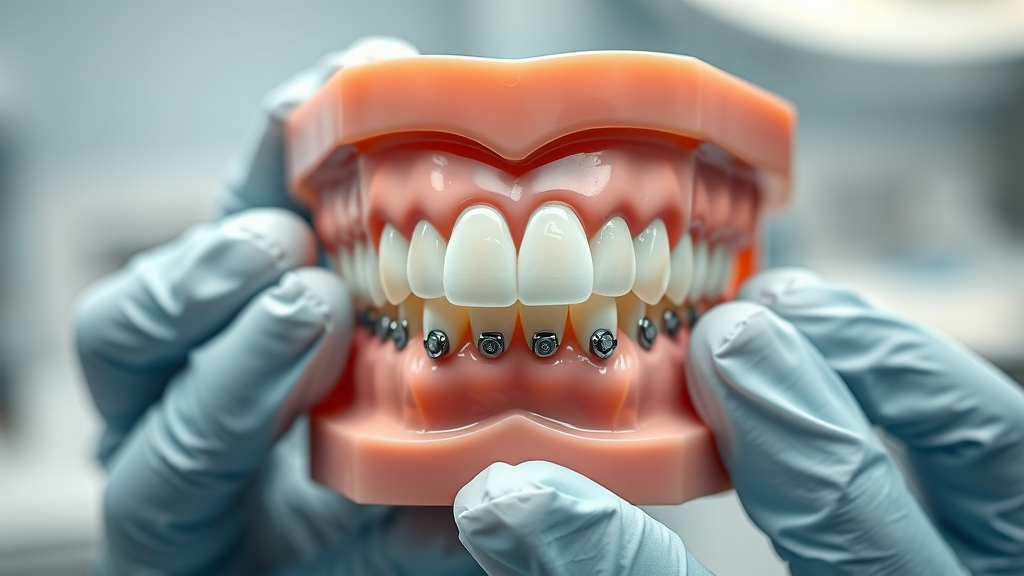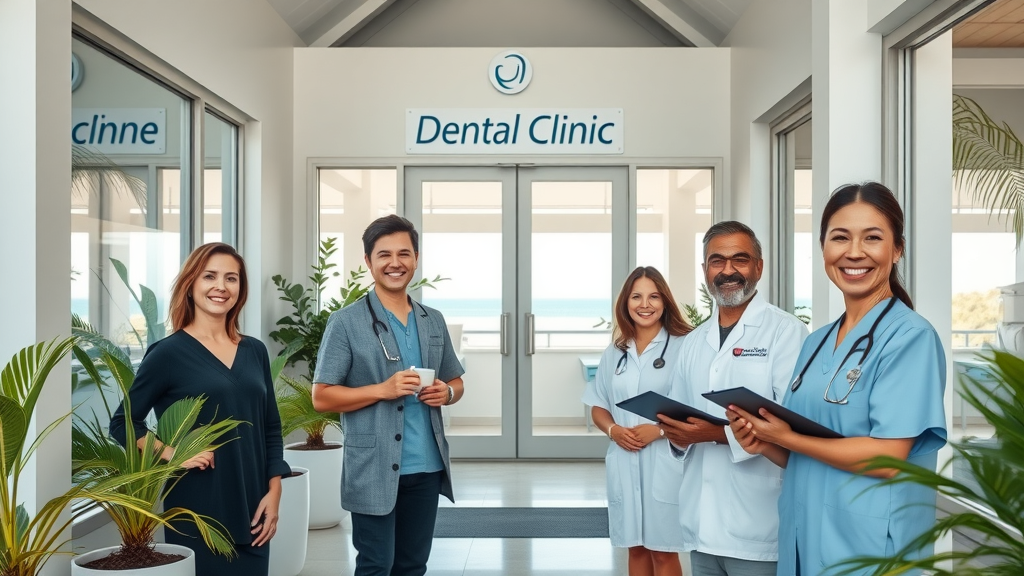Did you know? According to the American Sleep Association, up to 80% of moderate and severe obstructive sleep apnea cases remain undiagnosed, with jaw misalignments playing a significant role in disrupted sleep quality. If you've ever wondered if your jaw pain or restless nights could be linked—and if a specialist can truly help—this guide delivers answers from the experts. Let’s explore the impactful connection between orthodontic care, sleep disorders, and your overall well-being.
A Startling Truth: The Surprising Link Between Orthodontics, Sleep Apnea, and Jaw Pain
"Up to 80% of moderate and severe obstructive sleep apnea cases remain undiagnosed, with jaw misalignments playing a significant role in disrupted sleep quality." — American Sleep Association

What You’ll Learn: How Can Orthodontists Help with Sleep Apnea or Jaw Pain?
The relationship between orthodontic treatment and sleep apnea
Understanding jaw pain and its connection to sleep disorders
Modern approaches in orthodontic care for improved sleep quality
Key treatment options, including temporomandibular joint (TMJ) solutions
Expert insights into free consultation and when to seek help
Understanding Sleep Apnea: Causes, Symptoms, and Impact on Sleep Quality
What is Sleep Apnea and Obstructive Sleep Apnea?
Sleep apnea is a common sleep disorder where breathing repeatedly stops and starts throughout the night. The most prevalent form, called obstructive sleep apnea (OSA), occurs when the muscles in your throat relax and temporarily block your airway, leading to interruptions in breathing during sleep. These pauses can last a few seconds to minutes and often result in poor oxygen flow to the brain and body. OSA can cause loud snoring, choking sensations, and disruptive nighttime awakenings. This condition not only affects your sleep quality but can also contribute to heart issues, high blood pressure, and daytime fatigue. Orthodontic treatment, specifically designed for sleep issues, can sometimes help by opening the airway or repositioning the jaw and teeth, ultimately improving breathing during sleep.
People often do not realize they have OSA until someone notices their heavy snoring or pauses in breathing. If left untreated, OSA can decrease your overall quality of life and increase health risks. Understanding the underlying causes—including jaw misalignment or other orthodontic-related issues—is key to finding the right solution. Early consultation with an orthodontist familiar with sleep apnea can make a critical difference in symptom relief and lasting change.
Common Causes and Early Signs of Sleep Apnea
There are many causes for sleep apnea, but some of the most common include excess weight, enlarged tonsils, nasal blockages, and jaw misalignments. When the lower jaw is set back or the mouth’s structure is too narrow, it can lead to airway blockages during sleep. Early signs may include chronic snoring, waking up with a dry mouth, frequent headaches, or daytime sleepiness. Other common symptoms are mood changes, trouble concentrating, and high blood pressure. Children can also show signs like bedwetting or behavioral problems.
People experiencing apnea symptoms such as gasping for air or recurring awakenings should not ignore these warning signs. If you notice signs of obstructive sleep apnea or your child struggles with sleep, an orthodontic evaluation may reveal if your oral structures contribute to the problem. Early intervention—sometimes using a custom oral device—can reduce symptoms and improve daily living.

Assessing Sleep Quality: Why It Matters
Good sleep quality is essential for both physical and mental well-being. Poor sleep from untreated sleep apnea can impact everything from your immune function to memory and mood. Over time, continual sleep disturbances increase risks for cardiovascular disease, diabetes, and even accidents due to drowsiness. People with sleep apnea often report morning headaches, trouble staying asleep, and daytime grogginess—symptoms that can erode quality of life and may signal an underlying issue in the teeth and jaws.
When assessing your sleep, orthodontists and sleep specialists look at patterns like snoring, restlessness, and nighttime awakenings. Identifying whether oral health or jaw structure is at the root of poor sleep quality allows for tailored treatment plans. A comprehensive sleep study or orthodontic evaluation can identify if corrective appliances could help reduce sleep apnea episodes and restore energy. Don’t underestimate the life-changing improvements that can come from addressing sleep quality issues early.
Exploring Jaw Pain: Temporomandibular Joint Disorders and Their Effect on Your Life
What is Temporomandibular Joint Disorder (TMJ)?
The temporomandibular joint (TMJ) is the hinge connecting your jawbone to your skull, allowing you to chew, speak, and yawn. Temporomandibular joint disorder (TMD or TMJ disorder) describes a range of conditions that cause pain, stiffness, or dysfunction in this joint. You might experience clicking, popping, difficulty opening your mouth, or discomfort when moving your jaw. TMJ is common and can be triggered by injury, arthritis, misalignment of teeth and jaw, or chronic habits like teeth grinding (bruxism).
TMJ problems have far-reaching effects. Not only can they cause chronic jaw pain and tenderness, but they may also contribute to headaches, tooth wear, earaches, and sleep disruptions. For many sufferers, the pain becomes a daily challenge—affecting eating, speaking, and even mood. Understanding TMJ and its interconnection with sleep apnea and overall oral health is vital for lasting relief.
How Joint Disorder Contributes to Jaw Pain and Sleep Quality
When the temporomandibular joint isn’t functioning properly, it can lead to severe or constant jaw discomfort—sometimes radiating to the neck or head. For some people, TMJ-related pain spikes at night due to grinding or teeth clenching, which can tighten muscles and disrupt sleep quality. Poor jaw alignment can also narrow the upper airway, increasing the risk for obstructive sleep apnea. The resulting sleep disorder compounds the pain and fatigue, often going unnoticed until someone points out nighttime noises or disturbed sleep.
Left untreated, TMJ disorders can worsen over time. Chronic pain may affect your ability to focus at school or work while also contributing to mood swings and stress. Jaw misalignment and joint stress are not just discomforts—they’re risk factors for sleep and overall health problems. Seeking an orthodontic evaluation is a proactive step to identify the root of pain while also improving airway function for better rest.
Recognizing the Signs of TMJ and Related Jaw Pain
Symptoms of TMJ-related jaw pain are often subtle at first but can become more intense over time. Common signs include jaw clicking, popping, or grating noises; pain near the ear; persistent headaches; pain when chewing; and difficulty opening or closing your mouth fully. You may also notice jaw stiffness, changes in your bite, or a feeling that your teeth are not coming together as they used to. Nighttime symptoms can include teeth grinding or clenching, waking with jaw soreness, or even disturbed sleep due to pain.
If you notice these symptoms, especially alongside sleep quality issues or apnea symptoms, an orthodontist can help determine whether your teeth and jaw alignment are at fault. Addressing these signs early prevents the issue from becoming a chronic source of discomfort—or contributing to more severe sleep disorders. Accurate diagnosis is the first step in a comprehensive treatment plan for lasting jaw and sleep health.

Can Orthodontists Help with Sleep Apnea or Jaw Pain? Evidence-Based Insights
The Role of Orthodontic Treatment in Managing Sleep Apnea
Orthodontic treatment often plays a key part in managing sleep apnea, especially when jaw position or dental arches contribute to airway narrowing. While CPAP machines are a common treatment option, orthodontists can provide less invasive alternatives like custom oral appliances or jaw expansion devices. These approaches gently reposition the jaw or teeth, helping to keep the airway open during rest. Scientific studies show that a properly fitted oral device can significantly reduce sleep apnea episodes and relieve apnea symptoms—sometimes eliminating the need for CPAP in mild or moderate cases.
The strength of orthodontic care is in its ability to address the anatomical root causes—whether that’s a small lower jaw, narrow palate, or misaligned bite that collapses during sleep. With today’s advanced appliances, patients can see dramatic improvements in both breathing and sleep quality, often within weeks or months of starting therapy. If CPAP machines haven’t been successful or you’re seeking an alternative, consulting an orthodontist may open new avenues for lasting relief.
How Orthodontists Diagnose and Treat Jaw Pain
Diagnosing jaw pain and temporomandibular joint disorders involves a careful examination of your bite, jaw movement, and overall oral health. Orthodontists use digital X-rays, bite analysis, and patient history to uncover whether misaligned teeth or joint disorder are to blame. Once the root cause is identified, treatment may involve traditional braces, bite splints, or targeted orthodontic therapies that realign the jaw.
By correcting the bite and ensuring that the teeth and jaw work together harmoniously, orthodontists reduce strain on the temporomandibular joint and associated muscles. This not only eases pain but may improve sleep quality by preventing jaw clenching and related disruptions. Early treatment is crucial; the longer joint disorder and pain go untreated, the more difficult they may become to manage.
Modern Appliances for Obstructive Sleep Apnea and Jaw Alignment
Modern orthodontic solutions go beyond traditional braces. Innovations such as mandibular advancement devices, jaw expanders, and custom oral appliances are tailored to each patient’s anatomy and challenges. These oral devices are designed to gently move the lower jaw forward or widen the dental arch, significantly increasing airway space during sleep.
Clinical evidence supports that these appliances improve breathing during sleep and offer a comfortable, portable alternative to CPAP machines, particularly for those with mild or moderate apnea. They can also ease jaw strain by correcting alignment issues. A customized approach—developed in partnership with your orthodontist—provides the highest chance of sustainable, positive airway changes and restored sleep quality.

Reducing Sleep Apnea and Improving Sleep Quality Through Orthodontic Care
Orthodontic care is not just about a straighter smile. By targeting jaw structure and improving alignment, orthodontists can dramatically reduce sleep apnea events and enhance sleep quality. This approach addresses the source of the problem instead of only masking symptoms. With continual follow-up and adjustments, oral appliances become even more effective over time.
Quote: "Orthodontists uniquely address the root anatomical causes affecting sleep and jaw comfort, beyond merely relieving symptoms." — Dr. Julia Martin, DDS
Key Orthodontic Treatment Options for Sleep Apnea and Jaw Pain
Custom Oral Appliances to Reduce Sleep Apnea
Custom oral appliances are tailored devices worn during sleep that reposition the lower jaw or tongue to keep the airway open. These are highly effective for mild to moderate obstructive sleep apnea and for patients who cannot tolerate a CPAP machine. Lightweight and easy to maintain, they provide an immediate solution for restless nights and persistent apnea symptoms, improving sleep quality without invasive surgery. Although not suitable for all cases, most orthodontic practices can offer this as a first-line treatment option for both adults and older children.
Patients report better breathing and fewer apneic episodes with consistent use. However, regular follow-up is essential to ensure proper fit and avoid jaw discomfort over time. Selecting this therapy after a free consultation ensures you’re matched with the most appropriate device for your unique oral anatomy.
Jaw Expansion Devices and Their Role in Obstructive Sleep
Jaw expansion devices are used primarily in patients with narrow palates or restricted dental arches. By widening the upper jaw, these devices provide more room for the tongue and improve airflow, significantly reducing the severity of obstructive sleep apnea. Expansion is generally performed gradually and is especially effective in children or teens while their facial bones are still developing. For adults, select orthodontists offer advanced options for palatal expansion or combined therapies.
As the dental arch widens, patients often experience a marked decrease in snoring and better nights’ sleep. This approach is ideal when oral appliances alone are insufficient or if the underlying airway obstruction is related to jaw size. Combined with other treatment strategies, jaw expansion devices are a powerful tool for those with anatomical limitations.

TMJ Orthodontic Therapy: Relieving Temporomandibular Joint Disorder
For patients with temporomandibular joint disorder (TMD), orthodontists may recommend a combination of braces, jaw aligners, or bite splints. These treatments address the root alignment problem, promoting healthy jaw function and easing muscle tension. By correcting the way teeth come together, TMJ orthodontic therapy offers durable relief for daily discomfort as well as sleep disruption caused by grinding or misalignment.
TMJ therapies are best provided by specialized orthodontists skilled in joint health. Treatment duration may vary, but most patients notice symptom relief in the first few months, with continued improvement over time. If chronic jaw tension or frequent headaches affect your daily life and sleep, customized TMJ orthodontic therapy can make a profound difference.
Comparing Orthodontic Treatment Options for Sleep Apnea and Jaw Pain |
||
Treatment Option |
Best For |
Availability |
|---|---|---|
Custom Oral Appliance |
Mild-Moderate Sleep Apnea |
Most Practices |
Jaw Expansion Device |
Narrow Airways/Obstructive Sleep Apnea |
Selected Providers |
Braces/Orthodontic Realignment |
Jaw Misalignment + Sleep Quality Improvement |
All Orthodontists |
TMJ Orthodontic Therapy |
Temporomandibular Joint Disorder/Jaw Pain |
Specialized Orthodontists |
Benefits and drawbacks of each orthodontic treatment option
Who is a good candidate for specific therapies
The Journey: What to Expect During an Orthodontic Consultation
The Importance of a Free Consultation for Sleep Apnea or Jaw Pain
A free consultation with an orthodontist is your first step in diagnosing and treating sleep apnea or jaw pain. During this visit, the orthodontist reviews your medical and dental history, assesses your bite and airway, and may take digital scans or X-rays. This individualized evaluation leads to a treatment plan tailored to your needs—making it easier and more affordable to get expert insights without committing upfront. Many orthodontic practices offer this service, removing cost-related barriers to care.
Exploring your symptoms and discussing previous treatments—like CPAP machine use—helps determine which solutions could be more effective for you. Don’t hesitate to ask about insurance coverage, alternative therapies, or second opinions during your first visit. A free consult builds trust and sets the stage for better results.
How to Prepare for Your First Visit
Preparation makes your first orthodontic consultation productive and stress-free. Bring a list of symptoms, such as snoring, headaches, jaw pain, or trouble sleeping. Sharing details about previous therapies (CPAP, oral appliances, or medication) and overall health history gives the orthodontist a clear picture. If you have past dental records or sleep study results, pack those to save time.
Think about your goals—whether it’s reducing apnea, alleviating jaw pain, or just sleeping through the night without disruption. Writing down questions for the orthodontist shows you’re proactive in your oral health journey and ensures nothing important is forgotten. Establish clear communication from day one for a successful partnership throughout your orthodontic treatment process.

Questions to Ask About Your Sleep Quality and Joint Health
Is my sleep problem linked to jaw or bite alignment?
Which treatment options are best for my symptoms?
How soon will I see improvements in my sleep quality or jaw pain?
Are there side effects or limitations with specific devices?
How often should I return for follow-up care?
People Also Ask: Answers to Your Sleep Apnea and Jaw Pain Questions
Can an orthodontist help with sleep apnea?
Yes, orthodontists can often help with sleep apnea, particularly when the condition is linked to jaw structure or misalignment. Custom oral appliances, jaw expanders, and specific orthodontic treatments can open the airway and reduce apnea episodes, improving sleep quality.
Can an orthodontist fix jaw pain?
Orthodontists are uniquely trained to diagnose and address jaw pain, often caused by temporomandibular joint disorder. Solutions such as braces, splints, and bite realignment can reduce pain and restore comfortable function.
Can sleep apnea cause jaw pain?
Sleep apnea can sometimes contribute to jaw pain through increased muscle tension, teeth grinding, and stress on the temporomandibular joint during disrupted sleep. Addressing sleep apnea may alleviate some sources of jaw discomfort.
How do you treat sleep apnea in the jaw?
Treating sleep apnea related to jaw issues typically involves orthodontic appliances to reposition the jaw, increase airway space, or stabilize the bite. Collaboration with sleep specialists ensures a comprehensive, patient-centric approach.
Informative explainer video demonstrating orthodontic interventions for sleep apnea and jaw pain, featuring animated graphics of oral appliances, jaw expansion, and patient testimonials. Studio narration with expert orthodontist insights and before-and-after case studies.
Expert Tips: How to Maintain Good Sleep Quality and Jaw Health
Adopt healthy sleep posture
Avoid nighttime teeth grinding (bruxism)
Manage stress for reduced joint tension
Follow up regularly with your orthodontist
FAQ: Can Orthodontists Help with Sleep Apnea or Jaw Pain?
Which orthodontic device works best for sleep apnea?
Does insurance cover orthodontic treatment for sleep apnea or TMJ?
How long does it take to see results?
What happens if jaw pain goes untreated?
Can children benefit from orthodontic solutions for sleep problems?
Key Takeaways: How Can Orthodontists Help with Sleep Apnea or Jaw Pain?
Orthodontists provide effective solutions for sleep apnea and jaw pain tied to oral health.
Custom oral appliances, jaw expansion, and TMJ therapies can reduce symptoms and improve sleep quality.
An early, free consultation is crucial to identify the right treatment options.
Ongoing care and follow-up enhance long-term outcomes.
Conclusion: Taking the Next Step Toward Healthier Sleep and a Pain-Free Jaw
Understanding the ties between orthodontic treatment, sleep apnea, and jaw pain is essential for better health. Take advantage of a free consult to uncover your best path forward.
"Your smile is worth it — and staying informed is the first step. Join hundreds of locals already following Grand Strand Smile Spotlight for updates, advice, and trusted care insights."
Orthodontists can play a significant role in managing sleep apnea and jaw pain by addressing underlying structural issues. According to the American Association of Orthodontists, while orthodontists cannot independently diagnose or treat obstructive sleep apnea (OSA), they are often the first to recognize its symptoms and can collaborate with medical professionals to manage the condition. (aaoinfo.org)
One effective treatment involves the use of mandibular advancement devices (MADs), which are custom-made oral appliances designed to reposition the lower jaw forward during sleep. This forward positioning helps keep the airway open, reducing the frequency and severity of sleep apnea episodes. Studies have shown that MADs can significantly decrease the apnea-hypopnea index (AHI) and improve oxygen saturation levels during sleep. (ncbi.nlm.nih.gov)
In addition to MADs, orthodontic treatments such as braces or clear aligners can correct bite misalignments that contribute to temporomandibular joint (TMJ) disorders and associated jaw pain. By realigning the teeth and jaws, these treatments can alleviate strain on the TMJ, leading to reduced pain and improved jaw function. (westcobborthodontics.com)
For individuals with sleep apnea linked to narrow dental arches, palatal expanders can be utilized to widen the upper jaw, thereby increasing airway space and reducing obstruction during sleep. This approach is particularly beneficial for younger patients whose jaw structures are still developing. (dascoliortho.com)
In severe cases where non-surgical treatments are ineffective, surgical interventions such as maxillomandibular advancement (MMA) may be considered. This procedure involves repositioning the upper and lower jaws to enlarge the airway, providing a permanent solution to airway obstruction. (dentaldepotarizona.com)
In summary, orthodontic interventions, ranging from oral appliances to surgical procedures, offer effective solutions for managing sleep apnea and jaw pain by addressing the structural causes of these conditions.
 Add Row
Add Row  Add
Add 




Write A Comment